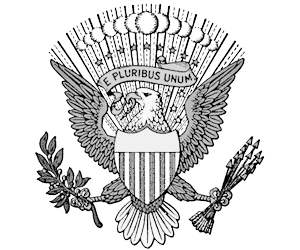|
|
|
|
|
The Jazz Singer Movie had six songs but very little dialogue, there were only 350 spoken words. Despite its limitations the movie was a sensation and all the Hollywood studios and their 'picture palaces' became wired for sound.
First Talking Movie Facts for kids: Fast Fact Sheet What was the First Talking Movie called? The First feature-length Talking Movie was called 'The Jazz Singer'. Who was the star of the First Talking Movie? The star of the First Talking film was Al Jolson, who is pictured in the Jazz Singer poster. He was called "The World's Greatest Entertainer". When was the First Talking Movie? The Jazz Singer, the first talking movie, was released on October 6, 1927. First Talking Movie, the Jazz Singer Facts:
Facts about
First talking movie - The Jazz Singer The silent movies were predominantly in black and white and the story of the picture was conveyed by an overstated melodramatic acting style with exaggerated gestures and facial expressions. Title cards were also used to explain The plot was clarified by title cards. The Silent Movies were accompanied by music played live on a piano or an organ that conveyed the emotion and drama unfolding in each scene. Silent Movies were a global phenomena. Because there was no sound, and therefore no language barrier, movies could play in any cinema in the world. The coming of sound and the 'Talkies' was highly controversial. The coming of sound and the 'Talkies' was highly controversial and caused panic across Hollywood. Everyone in the movie industry would be effected - actors, directors, studio chiefs, ‘scenarists’ (writers of silent film scenarios) and cameramen. It would mean re-learning the art of cinema. Silent Movies stars had become superstars - idolized in every country. Many stars feared that the 'Talkies' would ruin their careers. Some had very thick accents, others had shrill, high pitched voices. The silent stars whose careers were ruined by the coming of sound included Norma Talmadge, John Gilbert, Marie Prevost, Dolores Costello, Corinne Griffith, May McAvoy and Charles Farrell were among The silent stars whose careers were ruined by the coming of sound included Norma Talmadge, John Gilbert, Marie Prevost, Dolores Costello, Corinne Griffith, May McAvoy and Charles Farrell. The advent of talking pictures, and the effect they had on silent movie stars was the plot line for the famous 1952 movie, 'Singin’ in the Rain'. Movie studios made millions of dollars. The movie moguls had a global audience for their films, so many were reluctant to change to 'Talking Movies', convincing themselves that sound would prove to be a passing phase. The cost of investing vast sums by gambling on "talkies" also had a significant effect - silent pictures were still being made into the 1930's! In 1926 Warner Brothers, in conjunction with Western Electric, introduced a new sound-on-disc system. In the sound-on-disc system, sound effects and music were recorded on a phonograph record that would be electronically linked and synchronized with the film projector. (The sound-on-disc system was inherently faulty due to synchronization problems.) Initially Warner Bros. had intended the sound-on-disc system to record only music and sound effects - not dialogue. The first feature-length movie to use this technique with synchronized Vitaphone sound effects and a musical soundtrack was the 1926 swash buckler called 'Don Juan' starriing John Barrymore. The cost of converting to sound required a massive investment. New sound stages had to be built at the studios and 'picture palaces' (cinemas) had to be wired for sound to show Vitaphone films. The cost to Warner Bros. was $3 million. In April 1927 Warner Bros built its first sound studio to make its first feature-length musical and talkie. The movie was called 'The Jazz Singer' starring Al Jolson. Warner Brothers had originally picked George Jessel for the lead role, as he had starred in the Broadway stage production of the Jazz Singer. George Jessel was reluctant to have his voice recorded with the new sound system and was replaced by Al Jolson. The cameraman had to be aware of the microphone and the sound system. Early sound recording picked up a variety of noises - the whirr of the arc lights and cameras, the rustle of costumes and even the chattering of the cast and crew who were used to being able to talk whilst filming was going on. Cameras could no longer move freely and the hidden microphones impeded the movement of the actors. A clumsy, soundproofed booth was used in many of the earliest talkies to isolate the loud equipment from the actors. Microphones dangled from the rafters and multiple cameras shot simultaneously from the soundproofed booths to avoid picking up camera noise on the soundtrack. The Jazz Singer Movie had six songs but very little dialogue - only 350 "spontaneously spoken" words. The most famous songs from the Jazz Singer were 'Mamie', 'Toot Toot Tootsie Goodbye' and 'Blue Skies'. The Jazz Singer was directed by Alan Crosland, the American stage actor and film director, who had previously worked with synchronized Vitaphone sound effects in 'Don Juan' . The CEO of Warner Bros and producer of the Jazz Singer was Sam Warner who died one day before the movie was premiered at Warners Theatre in New York City. At first it was believed it would be impossible to film outdoor scenes with sound. John Ford was the first to shoot part of a sound movie ( Napoleon’s Barber) on location in 1928. By the end of 1927 only 400 theatres had been wired for sound. By 1930 40% of the nation's 'picture palaces had sound systems installed. |
| US American History |
| 1913-1928: WW1 & Prohibition |
|
|
|
|
|
First Published2016-04-19 | |||
|
Updated 2018-01-01 |
Publisher
Siteseen Limited
| ||
|
|

